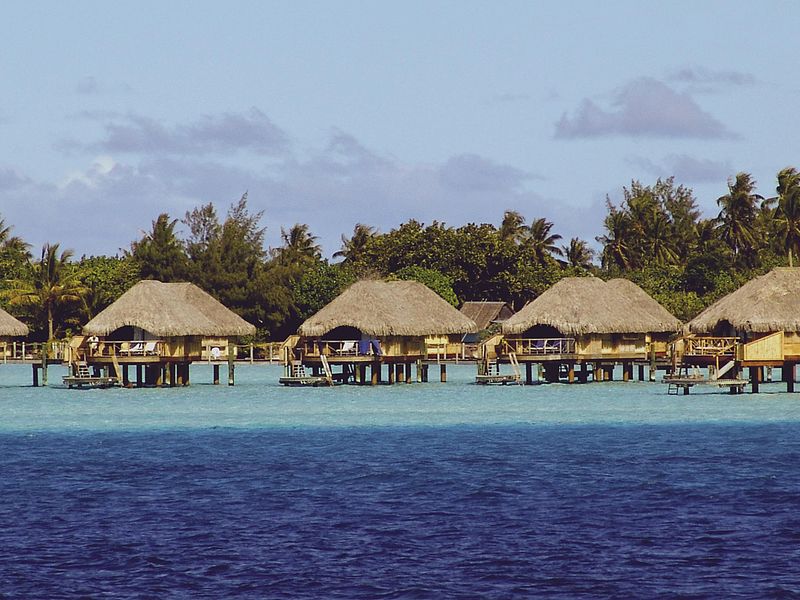Facts for Kids
Tahitian is a Polynesian language spoken mainly in the Society Islands of French Polynesia, rich in culture and history.
Overview
Contemporary Usage
Grammar And Syntax
Linguistic Features
Cultural Significance
Vocabulary And Dialects
Literature And Oral Traditions
History Of The Tahitian Language
Influence Of French Colonization
Efforts For Language Preservation

Inside this Article
French Polynesia
Government
James Cook
Literature
Community
Culture
English
French
People
Nature
Did you know?
🌴 Tahitian is mainly spoken in the beautiful Society Islands of French Polynesia.
🌺 The language has about 80,000 speakers, making it an important part of Polynesian culture.
🌊 Tahitian's history goes back hundreds of years, with roots tracing back to around 1000 to 1300 AD.
📚 Captain James Cook documented the Tahitian language during his visits in the 18th century.
📖 Tahitian uses only 13 letters, with 5 vowels and 8 consonants.
🌟 Each Tahitian word is known for its beautiful melodies and rhythms.
😄 In Tahitian, nouns come before verbs, which makes its grammar unique.
🌺 Different islands in French Polynesia have unique dialects of Tahitian.
🎉 Traditional music and dance heavily rely on the Tahitian language for storytelling.
🌷 Many initiatives aim to preserve the Tahitian language for future generations.
Introduction
Contemporary Usage
Schools in French Polynesia teach Tahitian, and it is even used on television and radio broadcasts. You can hear young kids using it on social media too! The government also supports efforts to encourage children to learn Tahitian at home. This helps ensure the language stays strong and vibrant for future generations. Speaking Tahitian helps connect people to their history and each other! 🌍
Grammar And Syntax
Nouns come before the verbs, which is different from English. For example, in Tahitian, you might say "te tamaiti e a'ahi" to mean "the child is shining." There are also no word endings to show if something is plural! Instead, people use words like "te mau" to say "the (plural)". Simple sentences are easy to form, and using descriptive words can create beautiful phrases. Understanding this helps you become a great Tahitian speaker! 🌈
Linguistic Features
It has a simple sound system, using only 13 letters - 5 vowels (a, e, i, o, u) and 8 consonants (h, m, n, p, r, t, v, and ' apostrophe). Tahitian is known for its beautiful melodies and rhythms. Each word is like a little song! 🌟
For example, the word for "friend" is "tama hui," which means "little children together." Tahitian also has many words that describe nature like "moana" for "ocean" and "ra'i" for "sky."
Cultural Significance
Traditional music and dance rely heavily on the language for storytelling. Songs called "me'ae" are often sung in Tahitian during celebrations. The famous Hula dance tells beautiful stories about love and nature, using the language to express emotions. Festivals like Heiva i Tahiti are events where people celebrate their roots and showcase Tahitian performances! The language ties the community together, making it an essential part of their identity. 🎉
Vocabulary And Dialects
People often use words related to nature, like "tānā" for "land" and "fakarava" for "to dream." Different islands may have their unique dialects, such as the dialects of Moorea and Bora Bora. Some words may change in pronunciation or meaning depending on where you are. This makes every island special and adds variety to the language! 🌊
Learning new words can be like discovering treasures hidden in the ocean!
Literature And Oral Traditions
Oral traditions are very important, as stories are passed down from generation to generation. Elders share myths about gods and goddesses, like 'Oro, the god of war and agriculture 🌾. In Tahitian culture, storytelling is often done during gatherings, so everyone learns together. Written literature includes poems and songs that capture the beauty of Tahiti. These stories help young people to understand their culture and keep the language alive! 🌺
History Of The Tahitian Language
The Tahitian people first settled on the islands around 1000 to 1300 AD. The language developed as they created their culture, traditions, and stories. European explorers arrived in the 18th century, and they found the Tahitian language fascinating! Captain James Cook visited Tahiti many times, documenting its language and people 📚. Over time, the language has changed, but it still holds onto ancient words and stories that tell about Tahitian life and beliefs.
Influence Of French Colonization
In the 19th century, French settlers came to the islands, bringing their language and culture. Over time, some French words mixed with Tahitian words, creating a unique blend. For example, "fare" means "house" in Tahitian, but the French word for house is "maison." Today, many people in Tahiti are bilingual, speaking both French and Tahitian. This offers amazing opportunities to connect with the world while staying rooted in their beautiful culture! 🇵🇫
Efforts For Language Preservation
️ Organizations and schools work together to promote Tahitian in lessons, festivals, and community activities. Classes often teach children songs, dances, and games in their native tongue. There are also written resources available, such as books and online materials 🌐. Many Tahitian speakers want to make sure their language continues, just like a beautiful flower that always blooms! This preservation helps keep the rich culture and traditions of the Tahitian people flourishing for years to come! 🌸

